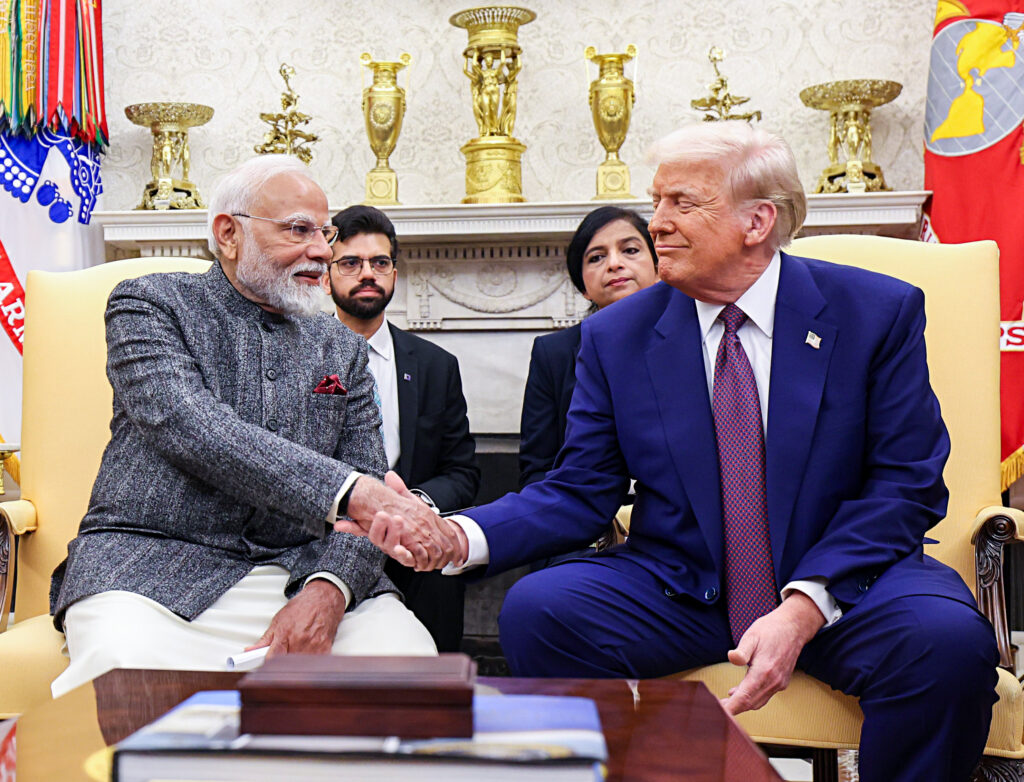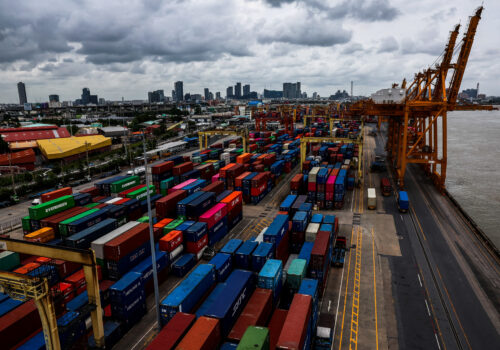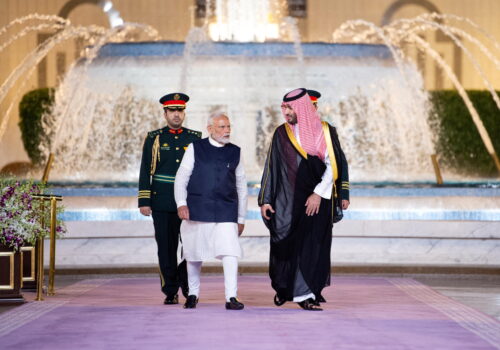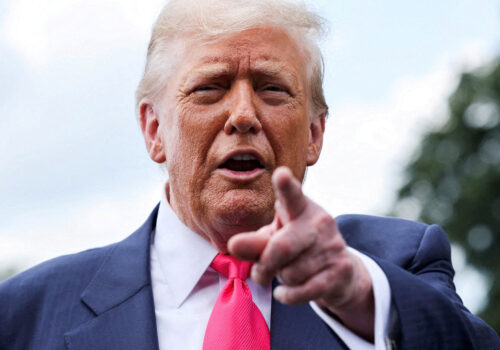Over the past week, US President Donald Trump has aimed a barrage of remarks and social media posts at India’s tariff and non-tariff measures, as well as at its crude oil purchases from Russia. Today, he followed through on his threats by hiking India’s tariff rate to 50 percent. These measures and the rhetoric—despite both sides having gotten close to a significant and historic interim trade deal—risk reversing decades of progress in the “partnership of the twenty-first century.”
However, New Delhi and Washington are continuing talks, including toward a trade deal that could help restore a measure of calm. The Indian government is reportedly examining additional potential tariff concessions, US liquefied natural gas (LNG) and defense purchases, and other offers to put on the negotiating table. In addition, common ground on quality control orders (QCOs) could help address a key non-tariff measure, which Trump termed “strenuous and obnoxious.”
Many Indian and international businesses often express concern about QCOs, which typically require certification by the Bureau of Indian Standards (BIS) to sell products in India. QCOs can also require testing in local, BIS-certified labs. QCOs for each product category are issued by the relevant ministry; for example, orders involving chemicals are issued by the Ministry of Chemicals and Fertilizers.
While QCOs have the stated aim of ensuring quality, safety, and performance for buyers in India, New Delhi often deploys QCOs—as well as anti-dumping duties and other measures—as part of a toolkit to guard against anti-market practices, mainly by Chinese entities. The toy industry is perhaps the most widely touted example of the success of QCOs. The measure, along with increased import tariffs, is credited for China’s share in India’s toy imports dropping from 94 percent in fiscal year 2013 to 64 percent in 2024. India’s toy making industry underwent a revival in the process, particularly between fiscal year 2015 and fiscal year 2023, with imports dropping by over 70 percent and exports growing by more than 60 percent during this period.
Encouraged by this success, the Indian government accelerated its roll out of QCOs for other industries, including chemicals, steel, electronics, textiles, and footwear. The number of QCOs increased from 14 in 2014 to 156 this year.
However, many businesses, both Indian and foreign, often express dismay about QCOs. For companies importing and selling in India, QCOs often add to costs and to the complexities of participating in the Indian market. At the same time, for companies manufacturing in India, QCOs can make it more difficult and expensive to source components that are not yet locally available, such as certain kinds of printed circuit boards and compressors. Small and medium-sized businesses are likely to be especially impacted by this sourcing challenge. These issues can hurt India’s ability to attract more manufacturing supply chains and increase its share of global trade.
India could decide that imports that are ‘Made in USA’ . . . are exempt from QCO requirements.
The problem is that QCOs, while ostensibly targeted mainly at Chinese dumping, often cause “collateral damage” by impacting imports from other economies, even partners such as the United States, Japan, South Korea, and the European Union. The solution therefore could be to better target QCOs, to minimize collateral damage on both Indian and foreign manufacturers in India.
To be sure, China’s current dominance of many manufacturing supply chains means that even easing imports from other geographies will not guarantee that India-based manufacturing is able to access the inputs required. And even if the same inputs are available from non-Chinese sources, they might not yet be able to compete with China on cost. That said, enabling more diversified sourcing for India-based manufacturing would at least start to address some of the QCO-related concerns.
The most direct and impactful approach would be to remove QCO requirements for imports from any geography other than China. However, this approach is unlikely to be feasible for a number of reasons, including New Delhi’s desire to not overtly target such a measure at China alone.
Instead, New Delhi could look to develop other approaches, using ongoing trade talks with Washington as a case in point. If a useful and feasible approach is developed, then it could be used in India’s negotiations with the European Union and other partners, as well.
The following are two examples of creative approaches. The goal would be to adapt QCOs both to diversify sourcing and support manufacturing in India and to retain protections against low-quality and/or anti-market practices.
First, India could decide that imports that are “Made in USA”—meaning, with sufficient value addition in the United States—are exempt from QCO requirements. This would be an implicit recognition of the quality of US manufacturing.
Second, QCOs could include clauses that recognize US standards and certifications and could require that the products are tested in the United States. Without a value addition requirement, this second approach would open the door to products made in other countries (for example, Mexico) that are imported into and certified in the United States, then shipped to India. But this could still largely achieve the goal of protecting domestic manufacturing in India against anti-market practices by Chinese entities.
The devil certainly will lie in the details. But New Delhi and Washington could consider these approaches or others to arrive at a mutually beneficial agreement on a high-priority non-tariff measure impacting bilateral trade and manufacturing supply chains in India.
Amid the current turbulence, both sides are continuing efforts towards a deal to accelerate bilateral trade, to achieve “Mission 500”—doubling trade to $500 billion by 2030—as announced in the joint statement following the February 13 meeting between Prime Minister Narendra Modi and Trump. Common ground on QCOs could be an important part of a deal, showcasing alignment on a key non-tariff measure alongside tariff concessions, any digital agreements, LNG and defense procurements, and/or other components.
Gopal Nadadur is a New Delhi-based nonresident senior fellow at the Atlantic Council’s South Asia Center and is also senior vice president for South Asia at The Asia Group.
Further reading
Fri, Aug 1, 2025
What to watch as Trump ratchets up global tariffs
Fast Thinking By
US President Donald Trump will raise tariffs on nearly every US trading partner. Atlantic Council experts take stock of what this means for the global economy.
Tue, Jun 3, 2025
India-Gulf relations are muted—but mobilizing
MENASource By Jonathan Fulton
The depth of Indian-Gulf relations creates a strong foundation for increased India-Middle East integration over the coming decades.
Fri, Aug 1, 2025
How Donald Trump remade global trade
New Atlanticist By Josh Lipsky
The US president has smashed the system, but the speed and scale of the smashing owes to a system that had been growing increasingly brittle for years.
Image: Washington, DC, Feb 13 (ANI): Prime Minister Narendra Modi and U.S. President Donald Trump shake hands, at The White House in Washington, DC on Thursday. (ANI Photo) REUTERS




